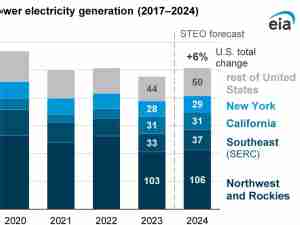Libya’s oil exports stutter, major eastern ports await restart
By: Reuters | Jul 16 2014 at 10:03 AM
Libya will not be able to export oil through its two largest eastern ports before August, due to safety checks after a near year-long closure, a senior oil official said on Wednesday.
The latest twist in a spiral of violence also casts a shadow over the vital deal two weeks ago to end the eastern blockade by federalist protesters of the last two facilities they held.
Until April, the rebels were holding four out of five eastern ports, cutting off over half of Libya’s export capacity.
But an oil export return is proving slow and a full ramp up is already facing new obstacles with a fresh protest by oil guards at the port of Brega.
At least 15 people have been killed in the capital and the eastern city of Benghazi since Sunday. Fighting between rival militias has transformed Tripoli’s airport into a battlefield, cutting the Libyan capital off from the outside world.
A senior Libyan oil official said technical teams at the two main eastern oil ports - Ras Lanuf and Es Sider - were still carrying out assessments.
“They have to check the pumps, lines, fields…carry out preventative maintenance,” Ibrahim al-Awami, general manager of inspections and measurement at the Libyan oil ministry, said.
“It probably won’t start until August.”
The two ports together can export 500,000 barrels per day, accounting for over a third of Libya’s export capacity of 1.25 million barrels per day.
With the return of some eastern output and the restart of a major western oilfield, the OPEC member’s production has recovered to nearly 600,000 bpd, compared with its pre-oil crisis level of 1.4 million bpd, its acting oil minister said on Tuesday.
WARY OIL TRADERS
Oil traders had remained cautious about any quick return of full Libyan exports.
“There were expectations of further problems and protests emerging, but the Libyans announcing the two main eastern ports will not reopen until next month cuts the return of Libyan supplies compared to market expectations,” Richard Mallinson at Energy Aspects in London said.
“The current deal may hold, at least until a new government forms and the federalist rebels see if their demands can be met, but the increased level of violence in the country is a worry.”
Brent crude oil prices have fallen from more than $115 a barrel in late June to a 3-month low of $104.39 a barrel on Tuesday, partly on the expectation of more Libyan exports, but recovered to above $106 a barrel on Wednesday.
Trading and shipping sources said no tankers have yet been booked to sail to Ras Lanuf or Es Sider for loading, despite the government announcing that the force majeure on the ports had been lifted last week.
Two Aframax tankers have loaded at the small western port of Mellitah in the last two weeks, trading and shipping sources said, while a third - the Olib - has docked at the easternmost port of Hariga, according to Reuters AIS Live tanker tracking.
The eastern port of Zueitina, which along with Hariga reopened through an earlier deal with the rebels in April, is not exporting as oilfields have yet to restart and storage tanks are empty.
High official selling prices, which are set by the National Oil Corp. (NOC), have also dissuaded international buyers, trading sources said, with many saying they have been priced at least $1 a barrel above other comparable quality crudes.
“They will have to offer discounts to sell it,” one trader said.
The quality of the oil is also a concern for traders, as much of the readily available crude has been sitting in storage tanks for nearly a year.
Estimates for where Libya’s oil exports may be in the next two months vary wildly.
If the port deal holds, average shipments could vary between less than 500,000 barrels per day to as much as 1 million bpd depending on technical difficulties, according to industry estimates and Reuters calculations.









